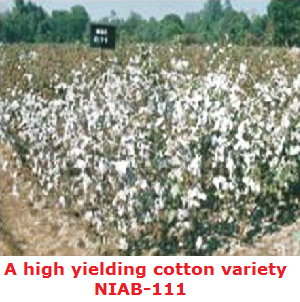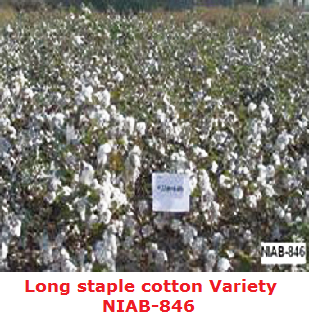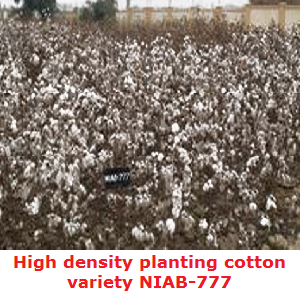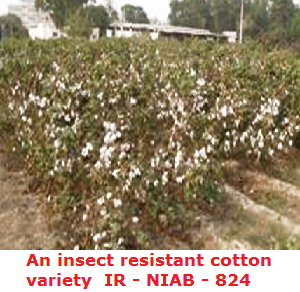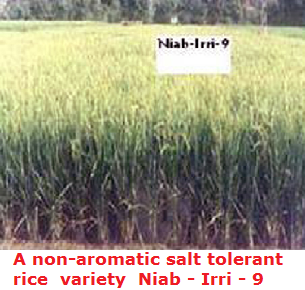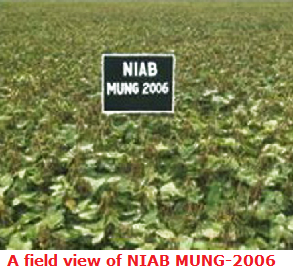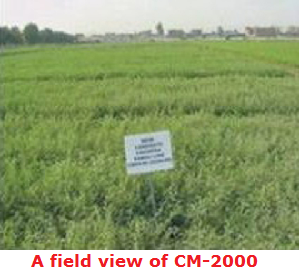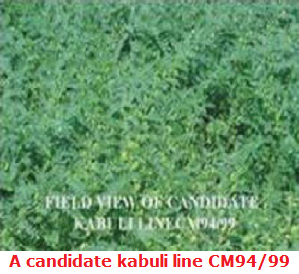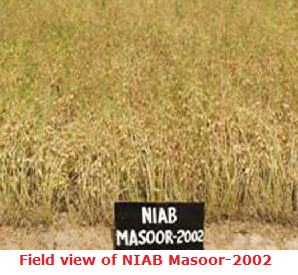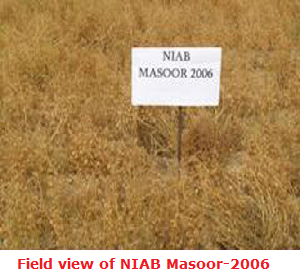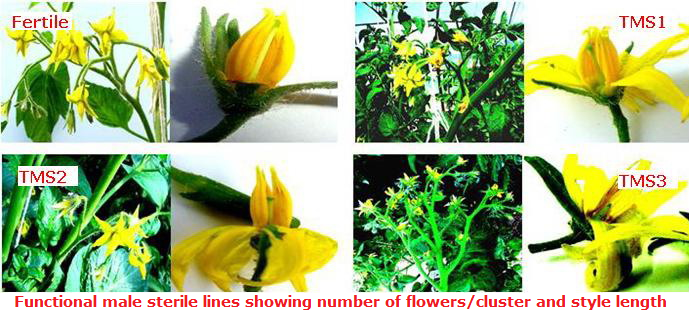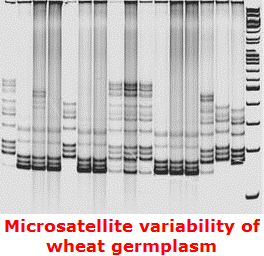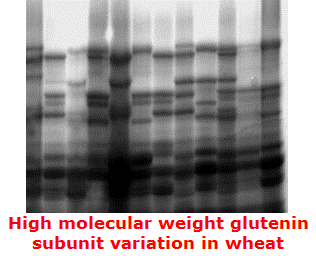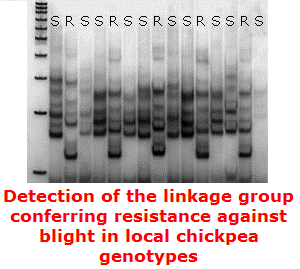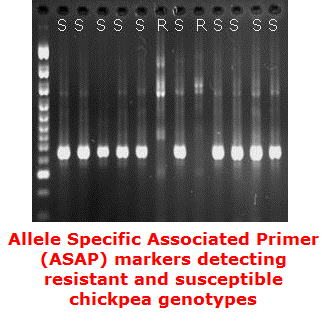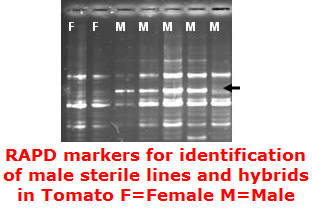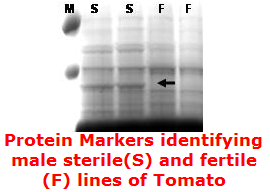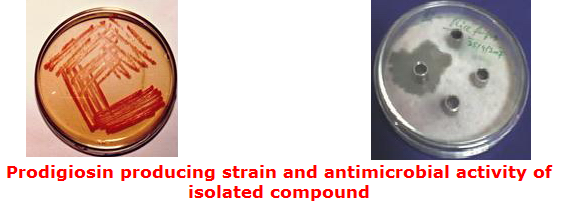
|
| ||||||||||||||||||||||||||||||||||||||||||||||||||||||||||||||||||||||||||||||||||||||||||||||||||||||||||||||||||||||||||||||||||||||||||||||||||||||||||||||||||||||||||||||||||||||||||||||||||||||||||||||||||||||||||||||||||||||||||||||||||||||
| Plant Breeding & Genetics Division | ||||||||||||||||||||||||||||||||||||||||||||||||||||||||||||||||||||||||||||||||||||||||||||||||||||||||||||||||||||||||||||||||||||||||||||||||||||||||||||||||||||||||||||||||||||||||||||||||||||||||||||||||||||||||||||||||||||||||||||||||||||||
|
The objectives of the Division’s are to create genetic variability through gamma radiation, marker assisted breeding and other related techniques for evolving commercial varieties having high yield potential, disease resistance, stress tolerance, good plant architecture and other desirable characteristics. The specific germplasm developed by this division is also supplied to other research organizations for use in their breeding programmes. The research efforts on cotton, rice, wheat, chickpea, mungbean, lentil, sesame, castorbean and kinnow over the years have resulted in the development and release of 65 crop varieties. These include 20 varieties of cotton, 10 of rice, 7 of chickpea, 15 of mungbean, 3 of lentil, 3 of sesame, 3 of tomato, 3 of castorbean and 1 of kinnow. Some of the earlier varieties have been replaced with the new improved ones. In addition, a number of promising mutants/varieties of these crops are at various pre-release stages of testing. Work on tomato breeding initiated in the recent past is progressing quite well. Crop wise details of the breeding programmes are given below. [top] 1. Cotton Evolution of early maturing, high yielding, heat tolerant, insect/disease resistant, Cotton Leaf Curl Disease (CLCuD) resistant and good quality varieties, and improved germplasm. 2. Rice Development of high yielding, short-statured, early maturing, disease resistant (Bacterial Leaf Blight (BLB)), long/exrta long grain varieties/germplasm of Basmati rice with low phytic acid through induced mutations and hybridization.
3. Grain Legumes
4. Tomato Development of tomato hybrid seed for high yield, disease resistance and abiotic stress tolerance. 5. Marker Assisted Breeding
1. Cotton
Cotton improvement programme at PB&GD has
evolved five high yielding, early maturing, insect and disease
resistant varieties of cotton with acceptable fibre quality. NIAB 78 was the
The onset of CLCuD in early 1990s resulted in a sharp decline in cotton production inflicting a severe setback to our economy (approximately 700 billion rupees upto 2001). During the past 11 years, continuous efforts have been made for the evolution of high yielding and CLCuD resistant varieties. These efforts have resulted in the development of varieties NIAB-999 and NIAB-111 approved during 2003 and 2004 for commercial cultivation. Both the varieties are early maturing, high yielding, heat and CLCuD (old strain) resistant. | ||||||||||||||||||||||||||||||||||||||||||||||||||||||||||||||||||||||||||||||||||||||||||||||||||||||||||||||||||||||||||||||||||||||||||||||||||||||||||||||||||||||||||||||||||||||||||||||||||||||||||||||||||||||||||||||||||||||||||||||||||||||
|
During 2008, a long staple and high yielding cotton variety NIAB-846 was approved by the Punjab Seed Council for general cultivation in Punjab. This variety was developed from a cross between NIAB 78 x REBA 288 (pollen irradiated with 10 Gy of gamma rays). In addition to good plant type, desirable leaf foliage, heat tolerance and some avoidance of pink bollworm, NIAB-846 is resistant to Cotton Leaf Curl Virus disease (old strain) and better tolerant to CLCuV-B (Burewal strain).
|
||||||||||||||||||||||||||||||||||||||||||||||||||||||||||||||||||||||||||||||||||||||||||||||||||||||||||||||||||||||||||||||||||||||||||||||||||||||||||||||||||||||||||||||||||||||||||||||||||||||||||||||||||||||||||||||||||||||||||||||||||||||
|
Many mutants/varieties (NIAB-852, NIAB-2008, NIAB-2009, NIAB-2010,NIAB-9811, NIAB-112) are under pre-release evaluation stage. Several mutated, segregating and backcrossed generations are in process of evaluation. Collection, characterization and use of local/exotic germplasm in hybridization work are also in progress at NIAB. Moreover, valuable gene pool possessing specific combining ability traits was developed and supplied to the national breeders; as a result nine cotton varieties have been released by other institutions using this germplasm evolved at NIAB. [top] |
||||||||||||||||||||||||||||||||||||||||||||||||||||||||||||||||||||||||||||||||||||||||||||||||||||||||||||||||||||||||||||||||||||||||||||||||||||||||||||||||||||||||||||||||||||||||||||||||||||||||||||||||||||||||||||||||||||||||||||||||||||||
|
The work to incorporate synthetic Cry 1Ac Bt gene (developed by NIBGE) in various NIAB varieties/advanced mutants was initiated during 2007. Different backcrossed and hybrid generations are under evaluation for breeding traits, expression and efficacy of the gene. IR-NIAB-824, an advanced candidate Bt line, was developed by incorporating Cry1Ac Bt gene (Mon 531) thorough cross breeding. The IR-NIAB-824 has shown appropriate expression of Bt gene, high yield potential and desirable fibre quality traits. The National Biosafety Committee (NBC) has granted exempt status to conduct field trials in 2009 and as a result IR-NIAB-824 has been included in the National Trials. |
||||||||||||||||||||||||||||||||||||||||||||||||||||||||||||||||||||||||||||||||||||||||||||||||||||||||||||||||||||||||||||||||||||||||||||||||||||||||||||||||||||||||||||||||||||||||||||||||||||||||||||||||||||||||||||||||||||||||||||||||||||||
|
2. Rice A variety named Kashmir Basmati, short duration (3 weeks early in maturity than parent Basmati-370), cold tolerant, aromatic rice was released in 1977 for general cultivation in Azad Jammu & Kashmir valley. The eating and cooking quality of the variety is at par with Basmati-370.
Niab-Irri-9, a salt tolerant and fine grain non-aromatic rice variety developed from IR-6 was released in 1999 for general cultivation on normal as well as saline soils. In saline soils, it has 17-18% higher yield as compared to commercial varieties IR-6 and KS-282. In normal soils, it produced 8% higher yield as compared to IR-6. Due to its translucent grain, the head rice recovery increased by 8%. The paddy seed has 10 % increase in length and 10% decrease in width compared to IR-6. | ||||||||||||||||||||||||||||||||||||||||||||||||||||||||||||||||||||||||||||||||||||||||||||||||||||||||||||||||||||||||||||||||||||||||||||||||||||||||||||||||||||||||||||||||||||||||||||||||||||||||||||||||||||||||||||||||||||||||||||||||||||||
|
A dwarf and early mutant EF 1-20-52-04 (derivative of Basmati 370 developed at 200 Gy dose of gamma rays) contributed to the NURYTs has scored 2nd position on country basis by producing 28% higher yield over standard Super Basmati. This mutant has long grains. Eight long/extra long grain mutants have been selected at 200 and 250 Gy dose of gamma rays in Basmati Pak. The grain length of these mutants ranged from 13.14 mm to 14.24 mm (28.82-39.61% more length) as compared to 10.20 mm in parent. The length/width ratio in the mutants was also much improved (6.15 to 6.72) as compared to 5.12 in parent. Phytic acid is a chelating agent which binds the micronutrients like Zinc, Iron and hampers the bioavailability to non ruminants and human which ultimately causes anemia, abortion of babies, osteoporosis and malnutrition in rice eating countries. In this regard, three homozygous low phytic acid (Lp) mutants Lpa-5, Lpa-9 and Lpa-59 are under evaluation for their morphological/yield related traits and subsequent use as a commercial variety/or in breeding programme. [top] | ||||||||||||||||||||||||||||||||||||||||||||||||||||||||||||||||||||||||||||||||||||||||||||||||||||||||||||||||||||||||||||||||||||||||||||||||||||||||||||||||||||||||||||||||||||||||||||||||||||||||||||||||||||||||||||||||||||||||||||||||||||||
|
3. Grain Legumes | ||||||||||||||||||||||||||||||||||||||||||||||||||||||||||||||||||||||||||||||||||||||||||||||||||||||||||||||||||||||||||||||||||||||||||||||||||||||||||||||||||||||||||||||||||||||||||||||||||||||||||||||||||||||||||||||||||||||||||||||||||||||
|
Mungbean Ten mutants/recombinants having reduced plant height, uniform and early maturity of pods and higher seed yield have been approved as commercial varieties. Mutant NM-28 which matures in 80 days, as against 90 days in case of parent, was released as a variety ‘NIAB Mung 28’ in 1983. Four
mutants, namely, NIAB Mung 19-19 and 121-25 (maturing in 60-70
days), and NIAB Mung 20-21 and 13-1, (maturing in less than 60
days) were released as commercial varieties in 1986. For incorporation of large seed
size in local mungbean, cross between variety 6601 and an exotic
large seeded variety, VC 1973A followed by irradiation of hybrid
seed, led to the development of two large seeded,
In 2006, NIAB Mung-2006 (a high yielding and disease resistant variety) was approved for general cultivation in the Punjab province. Presently NM-92 and NM-2006 are predominantly grown varieties and cover about 60% area in the Punjab Province. Mungbean germplasm developed at NIAB has resulted in release of AZRI Mung-2006 for general cultivation in the Punjab province by Arid Zone Research Institute Bhakkar. This variety was an outcome of hybridization of NIAB mutant line NM-96 with local germplasm. NIAB Mungbean variety NM-92 has also been released with the name of Bari mung-2 in Bangladesh. | ||||||||||||||||||||||||||||||||||||||||||||||||||||||||||||||||||||||||||||||||||||||||||||||||||||||||||||||||||||||||||||||||||||||||||||||||||||||||||||||||||||||||||||||||||||||||||||||||||||||||||||||||||||||||||||||||||||||||||||||||||||||
|
Chickpea
CM-72 (desi type) a high yielding and blight resistant (derivative of 6153 at 150 Gy dose of gamma rays) was released in 1983 for general cultivation. CM-88 (desi type) tolerant to both blight and wilt diseases, desi type variety (derivative of C727 at 100 Gy dose of gamma rays) was released for general cultivation in 1994. CM-98 (desi type) a bold seeded, high yielding and disease resistant (derivative of K850 at 300 Gy dose of gamma rays) was released in 1998. CM-2000 (Kabuli type) variety (derivative of ILC 195 at 150 Gy dose of gamma rays) with beige color seed was released for general cultivation in 2000.
CM1918, an Ascochyta blight resistant and high yielding mutant line (derivative of 6153 at 150 Gy dose of gamma rays) developed at NIAB was approved for general cultivation in KPK (Khyber Pakhtoon Khaw) as NIFA-88 in 1991. Chickpea germplasm developed at NIAB has resulted in the release of one desi variety (THAL-2006) for general cultivation in Thal area in 2006 by Arid Zone Research Institute, Bhakkar. This variety was an outcome of hybridization of NIAB mutant line CM82/87 with desi variety C44. | ||||||||||||||||||||||||||||||||||||||||||||||||||||||||||||||||||||||||||||||||||||||||||||||||||||||||||||||||||||||||||||||||||||||||||||||||||||||||||||||||||||||||||||||||||||||||||||||||||||||||||||||||||||||||||||||||||||||||||||||||||||||
|
Lentil Two varieties (one mutant and one recombinant) of lentil have been released for commercial cultivation. NIAB MASOOR 2002, has erect growth habit, earliness in maturity (120 days), black spotted seed coat colour and synchronous pod maturity, high seed yield and disease resistance. NIAB MASOOR 2006, has thick stem, lodging resistance, high number of pods, synchronous pod maturity, black spotted seed coat colour, high seed yield and disease resistance.
|
||||||||||||||||||||||||||||||||||||||||||||||||||||||||||||||||||||||||||||||||||||||||||||||||||||||||||||||||||||||||||||||||||||||||||||||||||||||||||||||||||||||||||||||||||||||||||||||||||||||||||||||||||||||||||||||||||||||||||||||||||||||
|
4. Tomato Research work on tomato breeding was started in 2003 for development of tomato hybrid seed for high yield, disease resistance and tolerance against abiotic stresses. Worth of genetic variability for plant growth type (indeterminate, determinate), earliness, fruit (size, shape, number, weight), and yield was recorded on more than 200 local and exotic accessions. The passport information of each line is documented to be used as parental material for hybrid breeding. Three functional male sterile lines, viz. TMS1 with determinate growth type and TMS2 and TMS3 with indeterminate growth types and ps2 type sterility were identified. Expression of stability trait and hybridity of these lines with locally adapted genotypes was found feasible. F1 crosses made through sterile and fertile elite lines are under evaluation for economic traits. Blight (early and late) and cucumber mosaic virus (CMV) are serious threats to tomato; TMS2 was found a good source of resistance for late blight and TMS1 is resistant/tolerant to cucumber mosaic virus. A number of good general combiner lines and specific combiner hybrids for yield and yield components have been isolated. Work is also under way to select and evaluate high yielding plants/lines from different segregating generations to develop pure lines to be used in hybrid breeding. Parallely, work has been initiated on heat tolerance and two accessions of wild species Solanum habrochaites S. Knapp & D. M. Spooner were found to be putative heat tolerant over 40 ºC.
|
||||||||||||||||||||||||||||||||||||||||||||||||||||||||||||||||||||||||||||||||||||||||||||||||||||||||||||||||||||||||||||||||||||||||||||||||||||||||||||||||||||||||||||||||||||||||||||||||||||||||||||||||||||||||||||||||||||||||||||||||||||||
|
6. Marker Assisted Breeding Utilizing molecular markers (SSR, STMS, SCAR, ISSR, RAPD and ASAP) germplasm of wheat, rice and chickpea has been characterized and screened for disease resistance and other agronomically important traits. In wheat the varieties carrying wheat/rye translocations, reduced height gene (Rht8) and high molecular weight glutenin subunits responsible for good cooking quality have been identified.
Information about the chickpea germplasm with resistance to wilt and blight is available and utilized in marker assisted breeding for these characters. Utilizing specific linked markers two genotypes namely CH 70/02 and CH 73/02 have been identified that are resistant to both blight and wilt diseases of chickpea and provide a good resistant source for utilization in breeding programmes.
SSR markers are also being employed for the characterization and diversity analysis in Basmati rice. Fingerprints of most of the available varieties have been produced through multiplex PCR and multiple loadings. Wild rice species and upland rice varieties were screened for water deficiency and heat tolerance characters with the help of morphological, physiological and biochemical markers. Physiological parameters, efficiency of PhotoSystem-11 (Fv/Fm), chlorophyll fluorescence, heat shock proteins (HSPs), stay green and leaf rolling characters can successfully be used as markers for screening and selection of rice genotypes for water deficiency and high temperature tolerance. Seed storage proteins and RAPD profiling has provided marker assisted conformation of tomato male sterile lines and identification of genotypes that are being used in hybrid breeding programs. Studies have resulted into availability of male parent specific (MPS) markers for about 14 parental combinations that were prerequisite for marker assisted assessment of tomato hybrid seed purity an utmost requirement of program.
Antioxidants & stress markers useful for marker assisted screening for drought salinity and heat tolerance in wheat have been iIdentified. Quick screening technique, based on seedling survivability as selection criteria for drought tolerance in wheat at seedling stage, has been established. This technique can be used for the assessment of drought tolerance at seedling stage in other crops as well. Antioxidant defense response in programmed cell death induced under different abiotic stress conditions has been assessed. It was found that plant defense response and internucleosomal nDNA fragmentation are central in stress tolerance mechanisms. Communalities in these biochemical markers among stresses can be a useful approach for marker assisted screening of multiple stress tolerance in crops. Secondary metabolites like prodigiosin & chitinases from bacterial strain Serratia marcescens protect rice against fungal diseases. Under field conditions, the foliar application of culture suspension of S. marcescens on diseased rice plants significantly reduced the disease incidence (10%). The technology is being further improved to tackle the rice pathogens.
Cotton germplasm is being screened for the presence of Bt genes using lateral flow strip method, chemical bioassays, and insect bioassays. Expression of Cry1Ac gene in various populations of cotton genotypes and the efficacy of the expressed proteins against American boll worms is being studied. Selections are being made for effective resistance against targeted pests. |
||||||||||||||||||||||||||||||||||||||||||||||||||||||||||||||||||||||||||||||||||||||||||||||||||||||||||||||||||||||||||||||||||||||||||||||||||||||||||||||||||||||||||||||||||||||||||||||||||||||||||||||||||||||||||||||||||||||||||||||||||||||
|
Table 1: Crop varieties developed through mutation breeding at NIAB | ||||||||||||||||||||||||||||||||||||||||||||||||||||||||||||||||||||||||||||||||||||||||||||||||||||||||||||||||||||||||||||||||||||||||||||||||||||||||||||||||||||||||||||||||||||||||||||||||||||||||||||||||||||||||||||||||||||||||||||||||||||||
| ||||||||||||||||||||||||||||||||||||||||||||||||||||||||||||||||||||||||||||||||||||||||||||||||||||||||||||||||||||||||||||||||||||||||||||||||||||||||||||||||||||||||||||||||||||||||||||||||||||||||||||||||||||||||||||||||||||||||||||||||||||||
